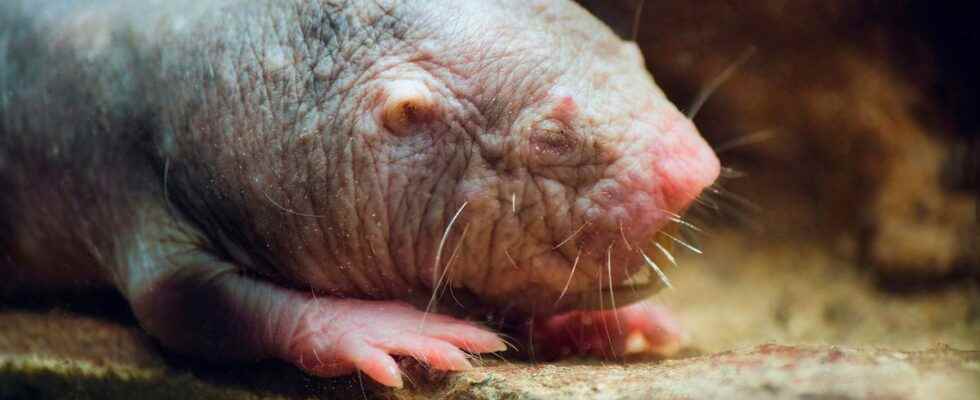Published on
Updated
Reading 2 mins.
New research suggests that naked mole rats make eggs throughout their lives. An astonishing discovery, which could lead to the development of new treatments in humans.
Unlike humans and other mammals, which become less fertile with age, naked mole rats can reproduce throughout their lives. A new study, published in the journal NatureCommunicationsindicates that females have an unlimited ovarian reserve.
1.5 million oocytes per female
“Naked mole rats are the weirdest mammals on the planet“, reveals the study’s lead author, Miguel Brieño-Enríquez.”It’s the longest-lived rodent, it almost never gets cancer, it doesn’t feel pain like other mammals, it lives in underground colonies and only the queen can have babies. But for me, the most amazing thing is that they never stop having babies – they don’t experience a decline in fertility as they get older.“
As a reminder, most mammals – including humans – are born with a defined number of oocytes. While some are released during ovulation, others die off naturally, over time. So that at an advanced stage, the ovarian reserve is exhausted. But not in naked mole rats, which can reproduce well into old age.
Faced with this biological curiosity, three explanations are plausible according to the researchers.
“Seither naked mole rats are born with lots of eggs, either fewer of these cells die, or they continue to create more eggs after birth”admits Brieño-Enríquez.
To validate these theories, the scientists compared the ovaries of naked mole rats and mice at different stages of development.
They then discovered that female mole rats had an unusually high number of oocytes compared to mice and that their cell death rates were lower than those of mice.
For example, at 8 days, a female naked mole-rat has an average of 1.5 million oocytes, which is about 95 times more than mice of the same age.
Even better, in naked mole rats, oogenesis (the process allowing the production of female gametes, oocytes, as well as their maturation into eggs) occurs after birth. This occurs in animals of 3 months, and even at an advanced age (10 years), which suggests that oogenesis could continue throughout their life.
Towards new treatments?
“This discovery is amazing“said lead author Ned Place, a professor at Cornell University College of Veterinary Medicine.”This challenges the dogma established nearly 70 years ago that female mammals are endowed with a fixed number of oocytes before or shortly after birth, with no additions to the ovarian reserve made by the following.”
Results, which could ultimately lead to the development of new treatments in humans.
“Although humans live longer, menopause always occurs at the same age. We hope to use what we learn from the naked mole rat to protect ovarian function later in life and prolong fertility.“, concludes Brieño-Enríquez.
